Lake Manyara National Park
If you’re new to safaris in Tanzania, Lake Manyara National Park offers a perfect and easy introduction. The park’s wildlife viewing is truly rewarding, making it an ideal spot for first-timers. The drive from Arusha to Lake Manyara is short and comfortable, just 120 km or about 2 hours on a well-paved road. Most Tanzania itineraries covering the Northern Safari Circuit include a stop at Lake Manyara, and it’s easy to see why. Keep reading to find out more!
Is Lake Manyara worth visiting?
Absolutely. While Africa is home to some of the world’s most majestic lakes—like Tanganyika (the second deepest lake on the planet) and Lake Victoria (the world’s largest tropical lake)—many, including the legendary Ernest Hemingway, consider the smaller gem of Lake Manyara — the loveliest of all.
With its dazzling white, alkaline shoreline, vibrant coral-pink flamingos by the millions, and its striking sapphire waters, the lake is truly a sight to behold.
It’s a paradise for bird lovers, hosting around 400 species of birds. The lake’s waters, fed by springs from the Crater Highlands, nourish lush forests that are home to an array of wildlife, including the famous tree-climbing lions of Manyara.
If you’ve seen Out of Africa (and if you haven’t, it’s a must-see), you’ll recognize Lake Manyara as the breathtaking scene where Denys Finch Hatton and Karen Blixen soar over the landscape in a biplane. The sight of thousands of flamingos suddenly taking flight from the water is a heart-stopping, unforgettable experience. So, yes—Lake Manyara is definitely worth a visit.
activities to Do At Lake Manyara
Lake Manyara National Park has many excursion possibilities. See all possibilities below:
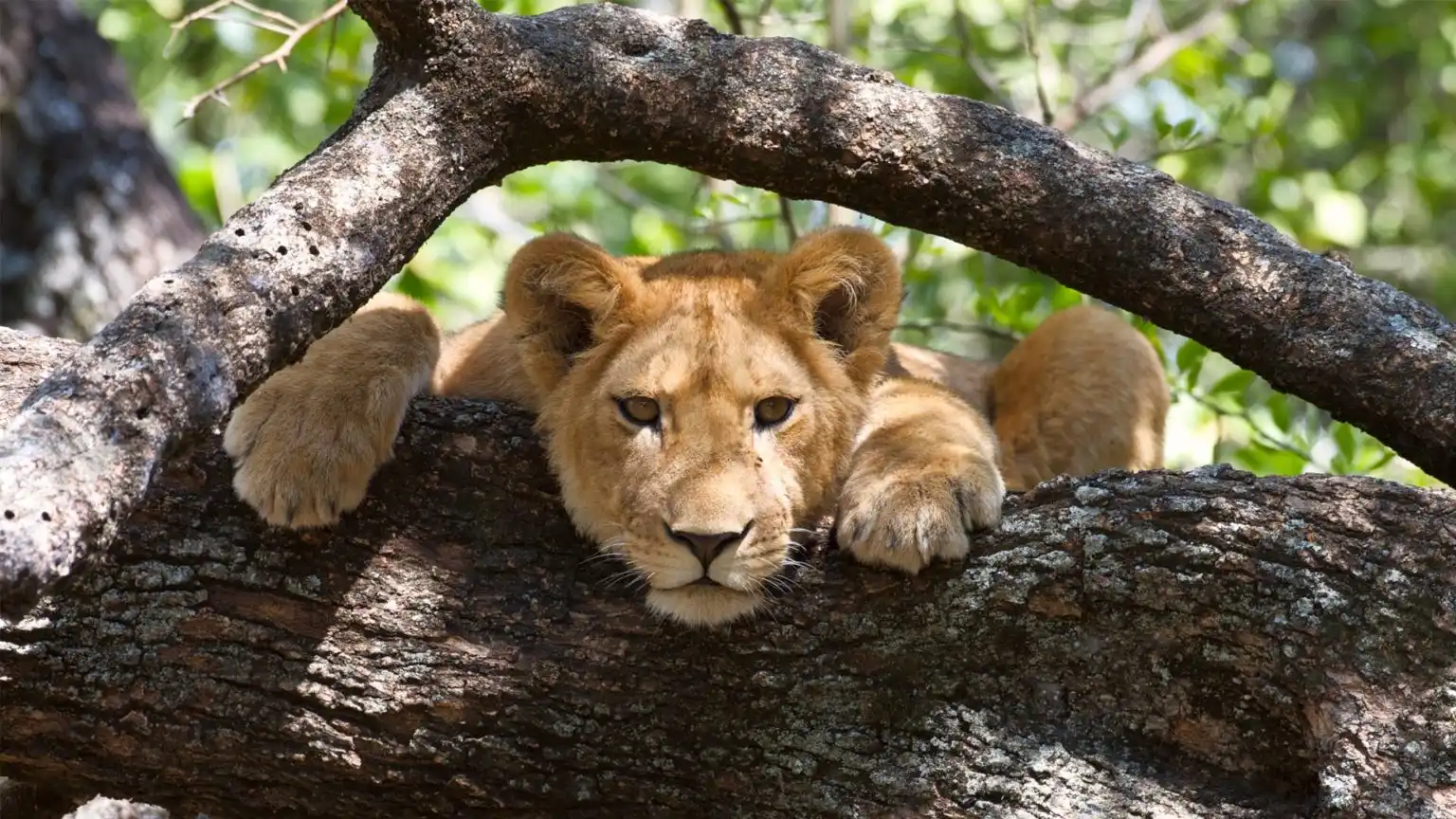
1. Search for Tree Climbing Lions
Lions are always a thrilling sight on safari, but spotting tree-climbing lions is a rare and special treat. These remarkable cats can be found in just a few places, with Lake Manyara National Park being one of the best-known spots.
While most lions prefer staying on the ground, the tree-climbing lions of Manyara enjoy lounging or napping on branches. Some scientists believe all lions are capable of this behavior, though they usually choose not to. Aside from Lake Manyara, tree-climbing lions can also be seen in Queen Elizabeth National Park of Uganda, as well as in Tarangire and Serengeti National Parks in northern Tanzania.
2. Beautiful scenery viewing & Photography
Lake Manyara National Park may be one of Tanzania’s smaller reserves, but it offers some of the most picturesque landscapes, making it a paradise for photography and scenic viewing. The park’s diverse ecosystems, from the lush forests home to vervet and blue monkeys, to the marshes where hippos wallow, create a stunning backdrop for any photographer.
With acacia woodlands and vast savannahs dotted with grazing zebras, the scenery is nothing short of breathtaking. Set against the dramatic East African Rift and the serene lake, the park provides perfect vistas for capturing nature’s beauty, ideal for photography enthusiasts and anyone seeking awe-inspiring views.
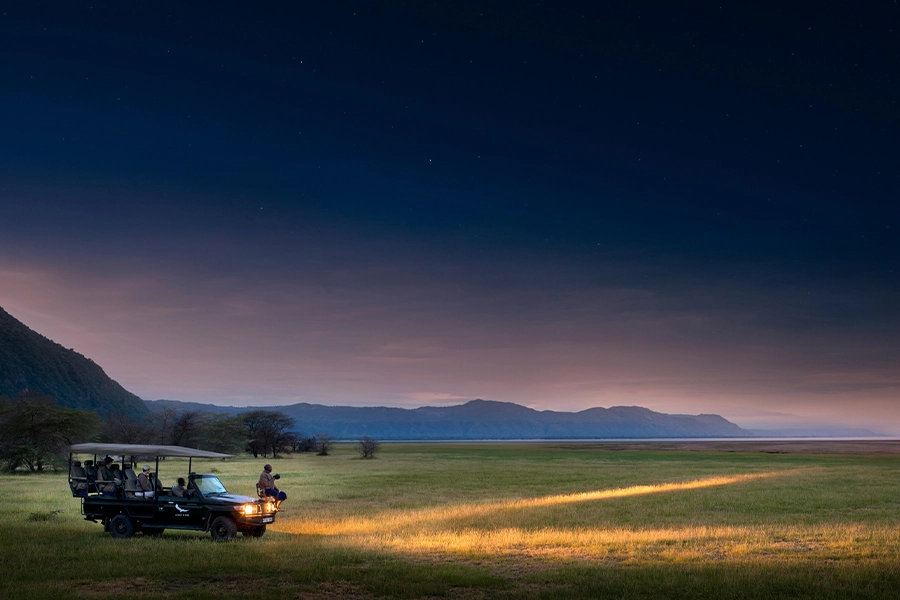
3. Go Birding and See Flamingos
Lake Manyara is a birdwatcher’s paradise, boasting over 400 bird species, making it one of the top bird-watching destinations in Tanzania. During the wet or “green” season, higher water levels attract an impressive array of waterbirds, making this the ideal time to visit if you want to witness massive flocks of birds in action.
Among the species you’ll likely encounter are pelicans, Egyptian geese, the majestic Crowned Eagle, and the distinctive African Spoonbill. However, the true stars of Lake Manyara are its vibrant flamingos. These stunning pink birds can be spotted along the lake’s shores in large numbers, feeding on the algae in the shallow, alkaline waters—creating a spectacular sight for bird lovers.
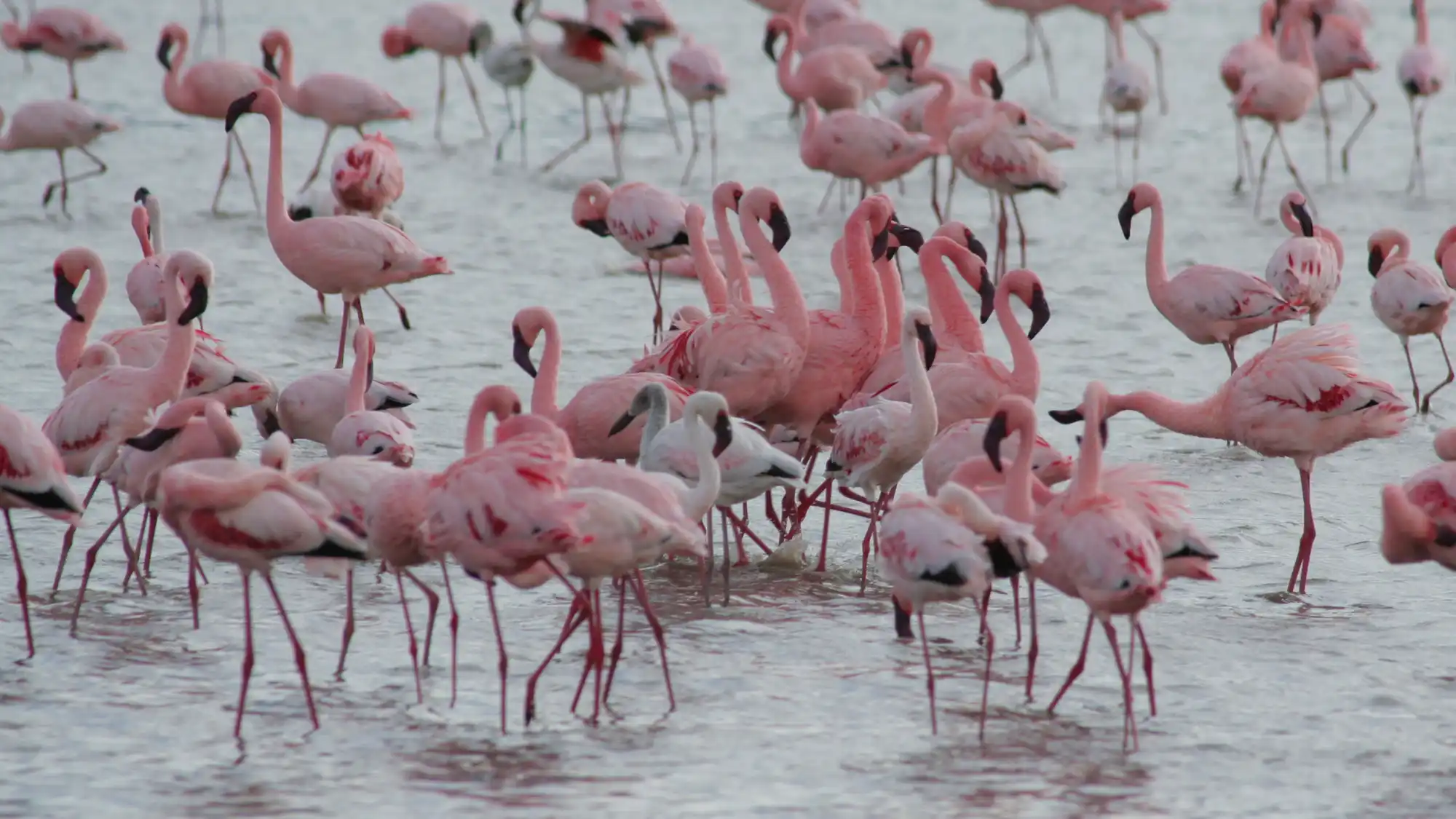
4. Nature walks
Lake Manyara is also known for its exceptional guided walking safaris, which offer a unique way to explore the park. These walks take you along the lakeshore, leading you to hot springs and a prime flamingo viewing spot.
In fact, we’d say Lake Manyara is one of the best places in Tanzania for a nature walk! The ideal time for a walking safari is early in the morning, and these excursions can be easily arranged when you arrive at the park entrance. However, we recommend booking your walking safari a day in advance, although you may get lucky with a last-minute spot depending on ranger availability.
5. Day Game Drive
A day game drive at Lake Manyara is a fantastic way to immerse yourself in the park’s wildlife. In addition to the famous tree-climbing lions, you’ll likely encounter elephants with impressive tusks, herds of buffalo and wildebeest, zebra grazing in the savannah, troops of baboons, and plenty of graceful giraffes. It’s the perfect opportunity to experience the diverse and vibrant wildlife that calls the park home.
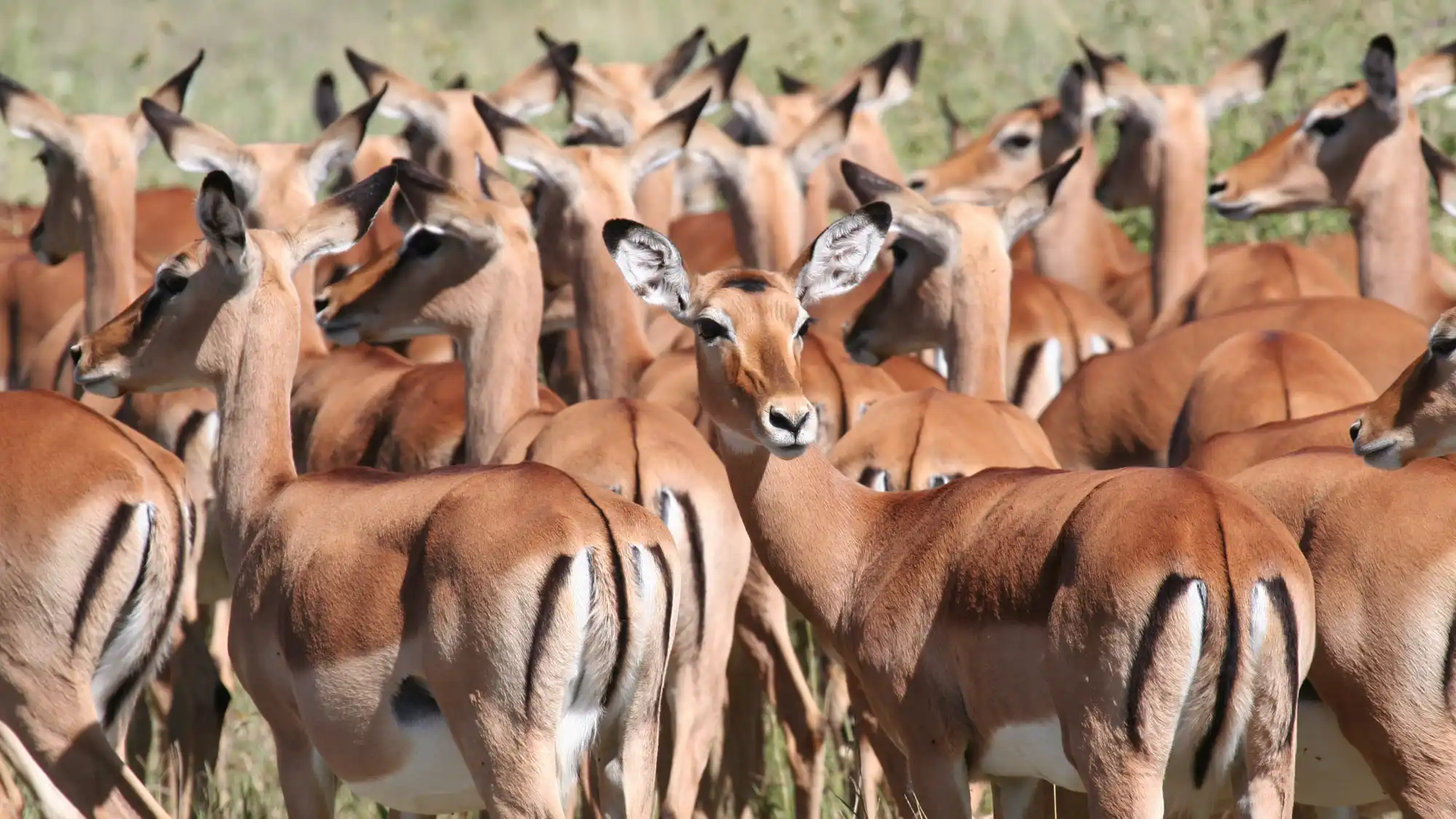
6. Night Game Drive
A night game drive offers an unparalleled thrill and a sense of adventure, as you venture into the wilderness after dark. The experience heightens your senses, making you more attuned to the sounds of animals hidden in the darkness, while you keep your eyes focused on the shadows shifting in the headlights and spotlight.
This is the time when nocturnal creatures come to life, from prickly porcupines to sleek civet cats. You might also spot predators like brown hyenas skulking through the night and lions, re-energized from their daytime slumber, hunting under the cover of darkness. If you’re lucky, a stealthy leopard might even cross your path, adding to the thrill of the safari.
7. Water Activities
In the wet season, Lake Manyara offers a range of exciting water activities, including canoeing, mokoro rides, and relaxing sunset boat cruises, allowing you to experience the park from a whole new perspective.
8. Treetop Walkway
The Manyara Treetop Walkway is Tanzania’s first canopy tour and one of the longest in Africa. Spanning 370 meters, this thrilling suspension bridge takes you 18 meters above the ground, offering a unique perspective of Lake Manyara National Park’s rainforest. As you stroll through the treetops, you’ll encounter playful monkeys, vibrant birds, and possibly even larger wildlife roaming beneath you.
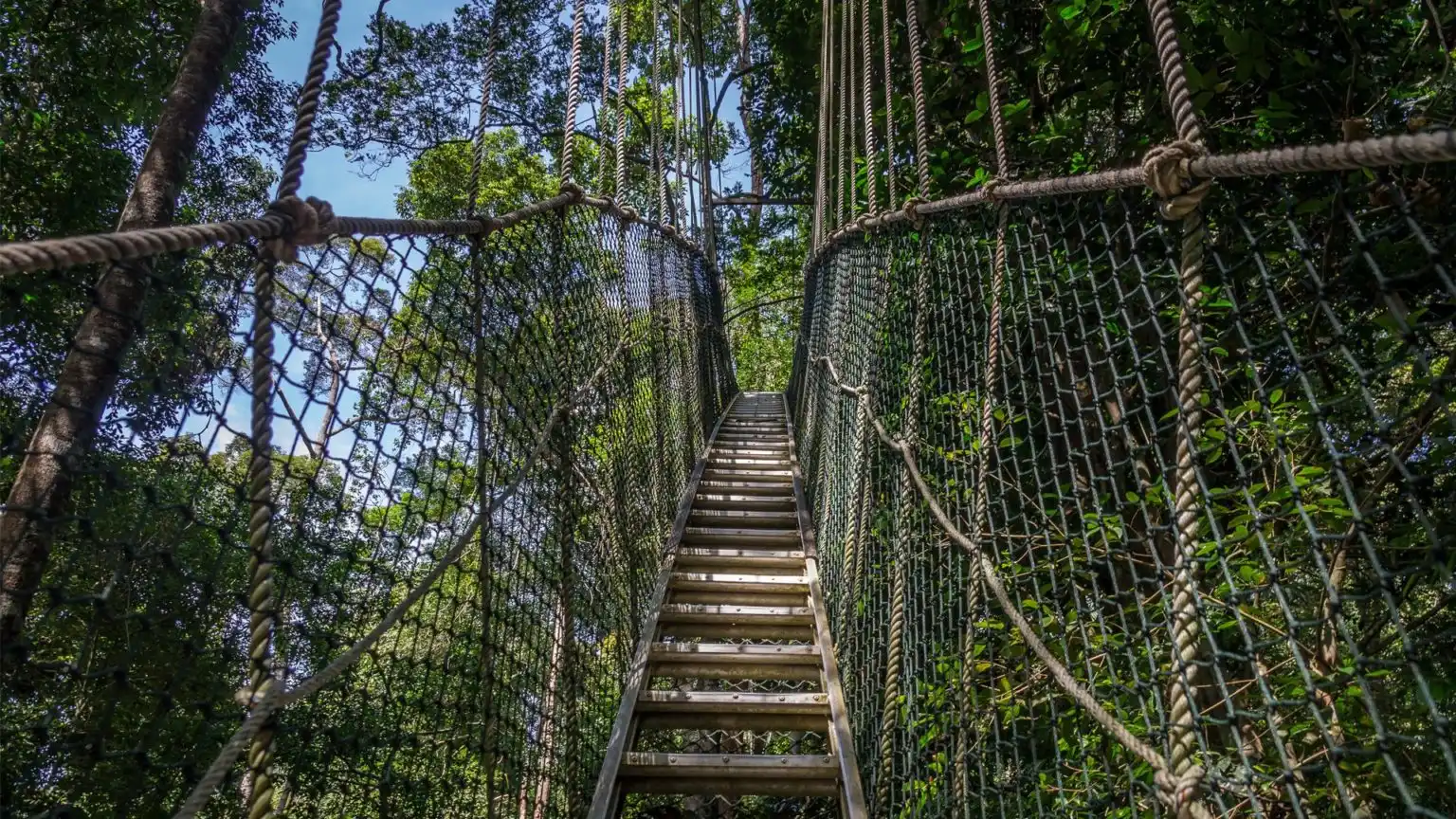
9. Cultural visits
When you’re not exploring Lake Manyara National Park, there’s plenty to experience outside the park as well. A cultural visit to the nearby village of Mto wa Mbu offers a fascinating glimpse into African rural life.
As the gateway to the park, Mto wa Mbu is a vibrant tropical village where around 120 different Tanzanian tribes live in harmony. You can also take a Tuk Tuk ride through the village with a guide, who will show you everything from local farms and homes to a school and a church. The lively, colorful atmosphere of this unique area promises surprises around every corner.
The best time to visit Lake Manyara
Game viewing at Lake Manyara National Park is fantastic year-round, but it’s especially great during the dry season, from late June to October. This period is also Tanzania’s peak tourist season, so expect more crowds and vehicles, which could affect your sense of wilderness.
Since most visitors arrive in the afternoon, we recommend heading to the park early in the morning to avoid the crowds and enjoy a more relaxed, pace-controlled experience. On the other hand, Lake Manyara is at its most picturesque during the wet season (November to May), when the vegetation is lush and waterfalls tumble down the escarpment. It’s also a prime time for bird watching, as many migratory species flock to the lake during this period.
Getting from Arusha to Lake Manyara
Lake Manyara is just a 2-hour drive from Arusha, but we suggest including it in a 9-day itinerary that also covers other top destinations like Tarangire, Serengeti, and Ngorongoro. Here’s a sample itinerary:
Day 1: Arrive in Arusha
Day 2: Drive from Arusha to Tarangire (150 km, 2.5 hours)
Day 3: Explore Tarangire National Park
Day 4: Drive from Tarangire to Serengeti (260 km, 6 hours)
Day 5 & 6: Discover the Serengeti
Day 7: Drive from Serengeti to Ngorongoro (140 km, 3.5 hours)
Day 8: Explore the Ngorongoro Crater, then head to Mto wa Mbu (200 km, 3 hours)
Day 9: Visit Lake Manyara, then return to Arusha (115 km, 2 hours)
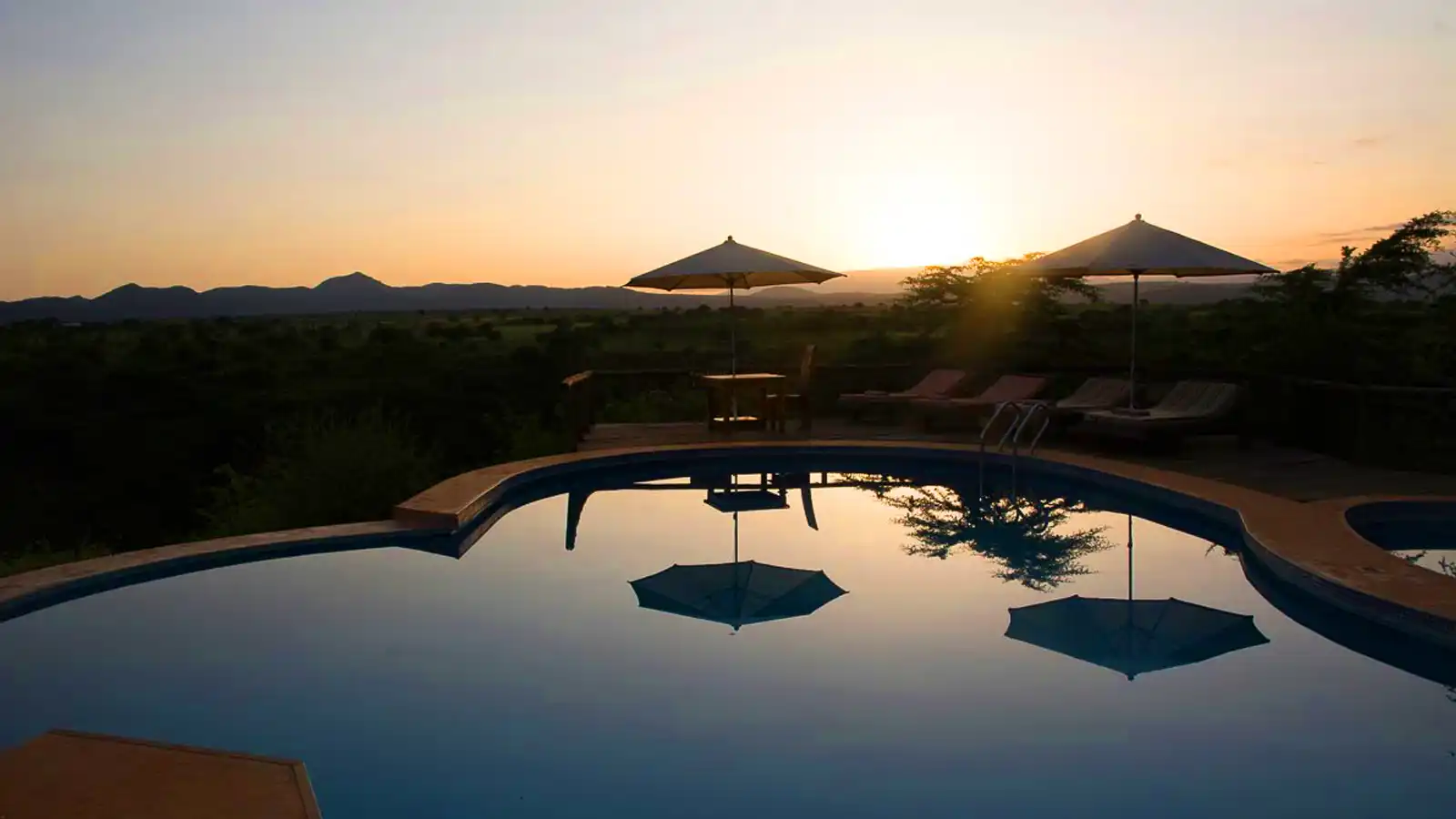
Where To Stay At Lake Manyara?
Looking for a place to stay while visiting Lake Manyara National Park? There are several fantastic options to suit various preferences, whether you’re after luxury, comfort, or a more rustic experience. From lodges with stunning views of the park to campsites nestled in nature, you can find accommodation that offers easy access to all the park’s incredible wildlife and scenic beauty. Whether you choose a high-end lodge or a charming tented camp, you’ll be able to enjoy the park’s unique atmosphere and breathtaking landscapes.
Here are some great accommodation options around Lake Manyara National Park:
- Lake Manyara Tree Lodge: A luxurious lodge with a unique treehouse experience, offering a blend of comfort and adventure, surrounded by nature.
- Manyara Wildlife Safari Camp: A charming, tented camp offering a more rustic experience with modern amenities, perfect for those looking for a close-to-nature feel.
- Escarpment Luxury Lodge: Set on the edge of the Great Rift Valley, this lodge provides stunning views of the park, as well as luxury accommodations and excellent service.
- Lake Manyara Serena Safari Lodge: Offering breathtaking views of the lake, this lodge provides comfortable rooms and an infinity pool, making it an ideal spot for relaxation after a day of safari.
- Mto wa Mbu Village Accommodation: For a more budget-friendly option, consider staying in local guesthouses or lodges in the nearby town of Mto wa Mbu, where you can also experience local culture.
- Kudu Lodge and Camp: A more budget-friendly lodge offering both camping and cabin accommodations with great access to the park’s wildlife and natural surroundings.
Taking off on your Lake Manyara safari adventure
Ready to embark on an unforgettable safari adventure at Lake Manyara? Reach out to our expert team at Greenway Nature Tours to plan your safari and explore this amazing destination.
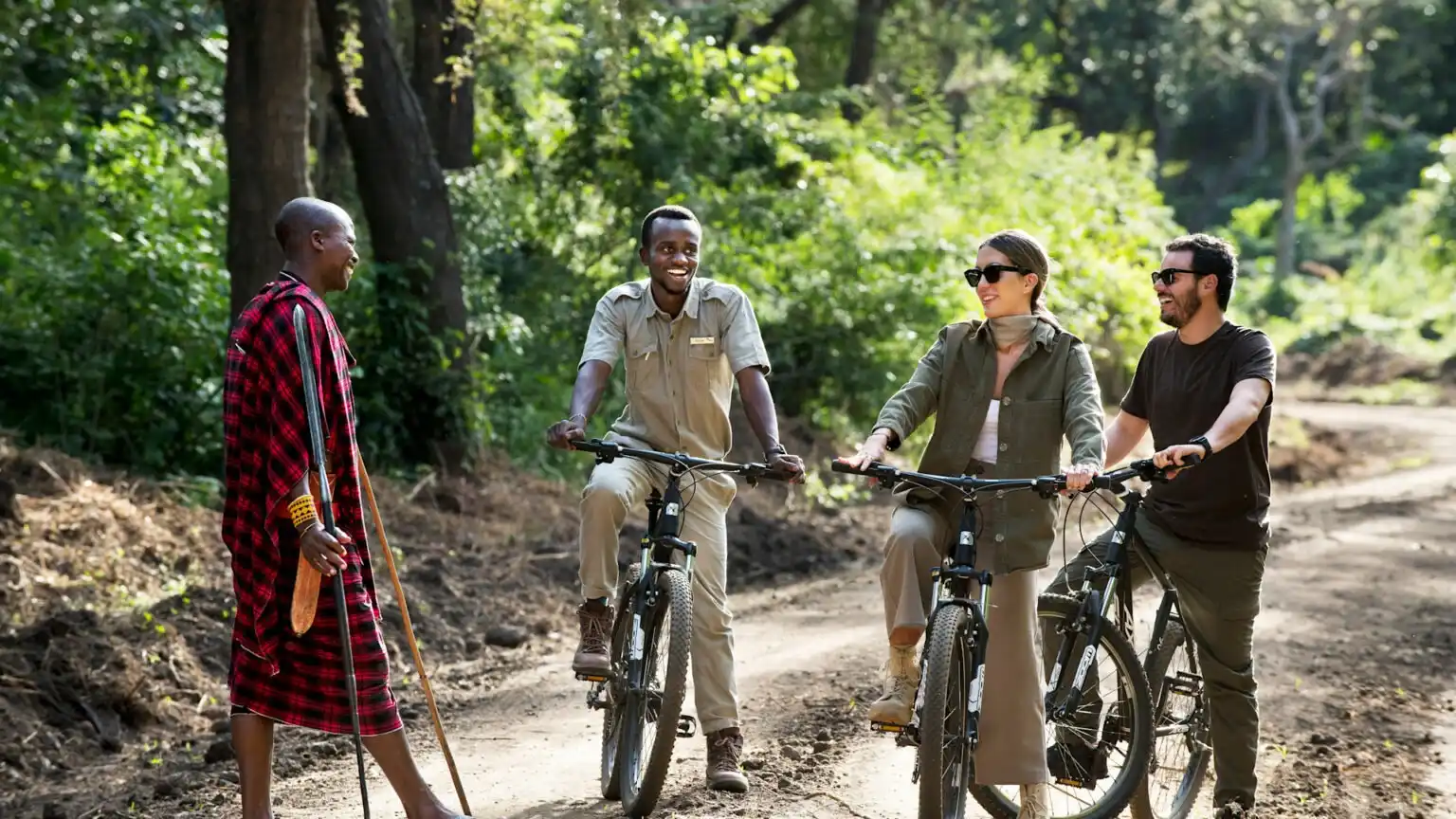
Our Trusted Partners






